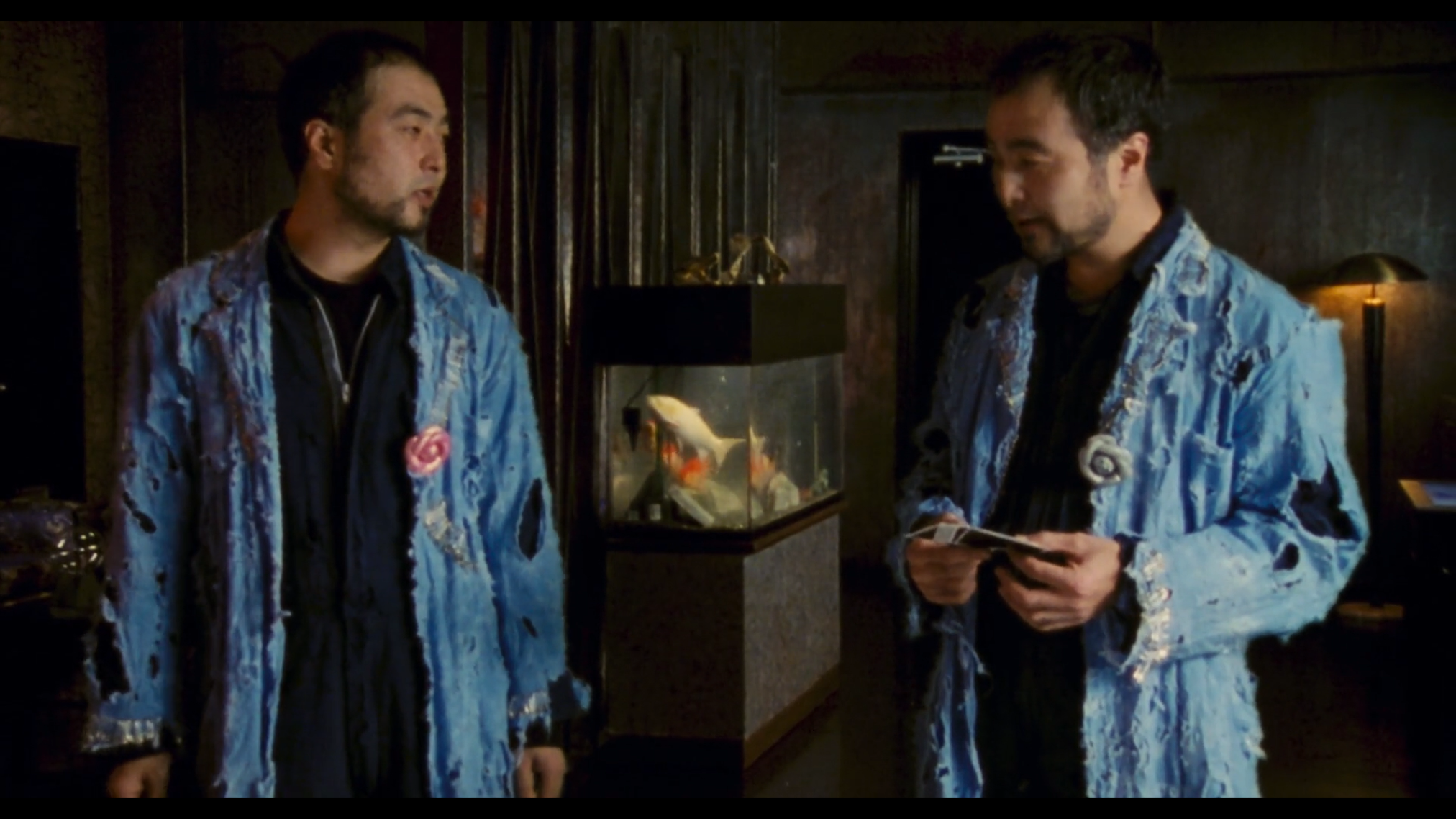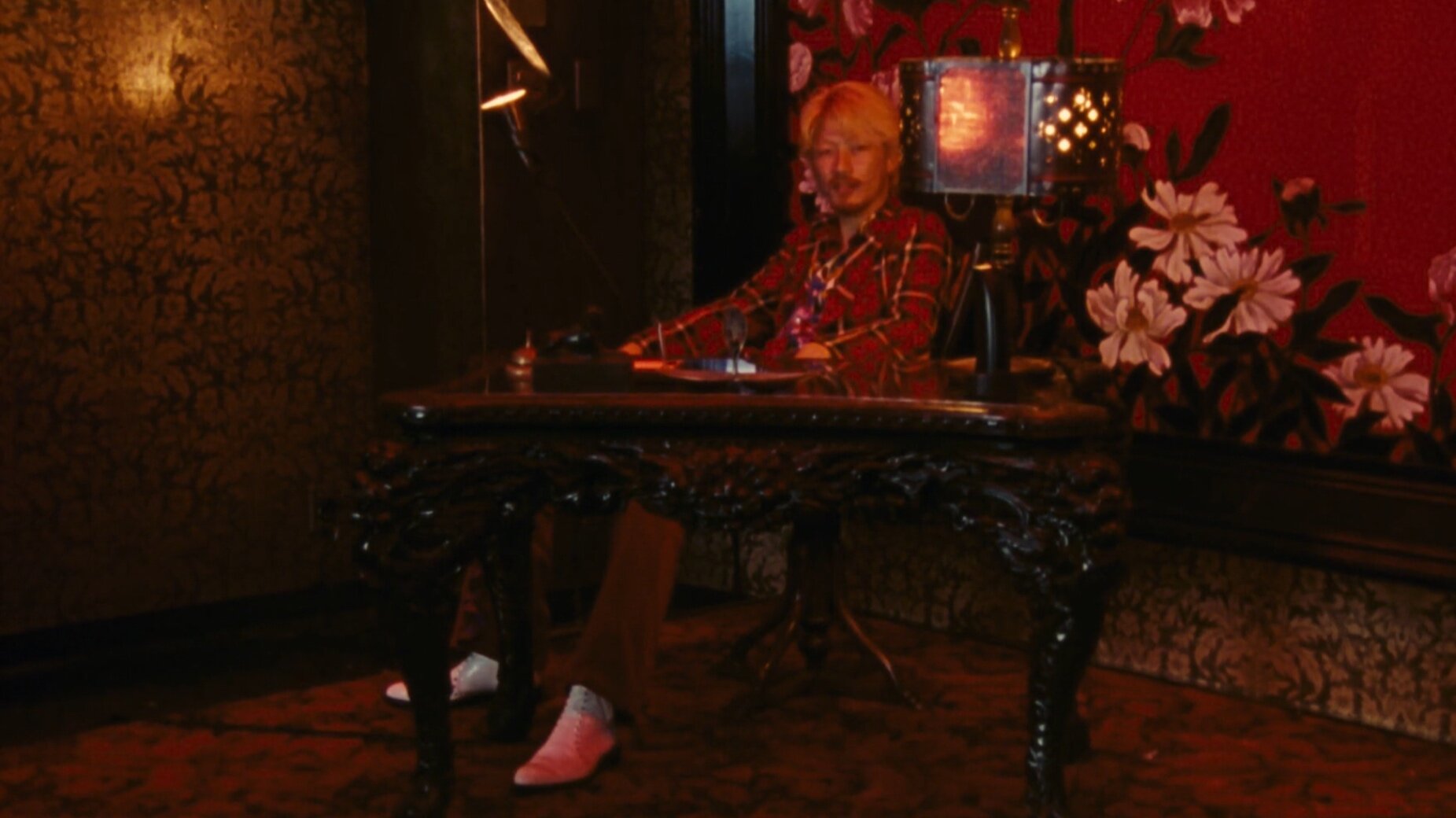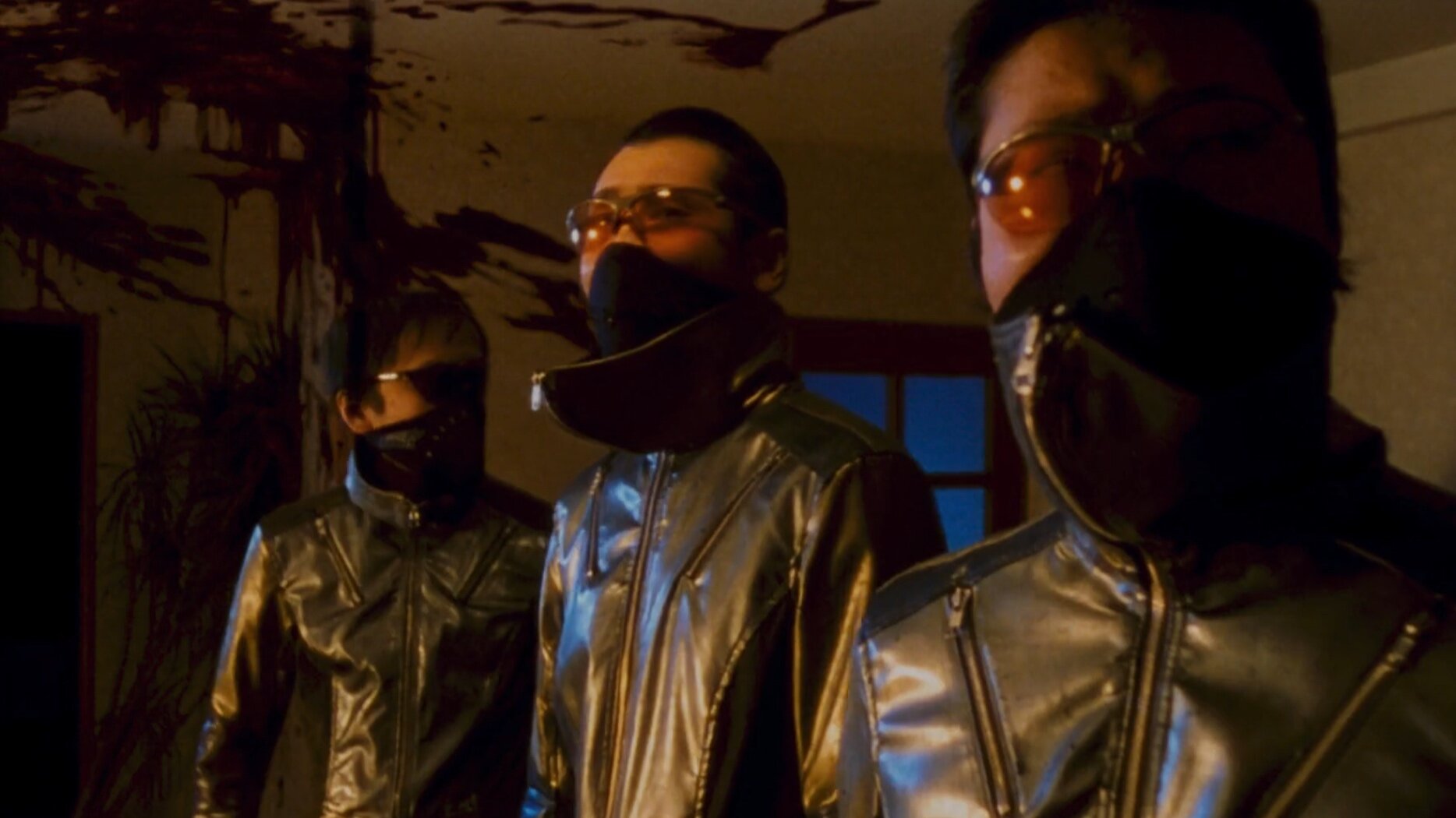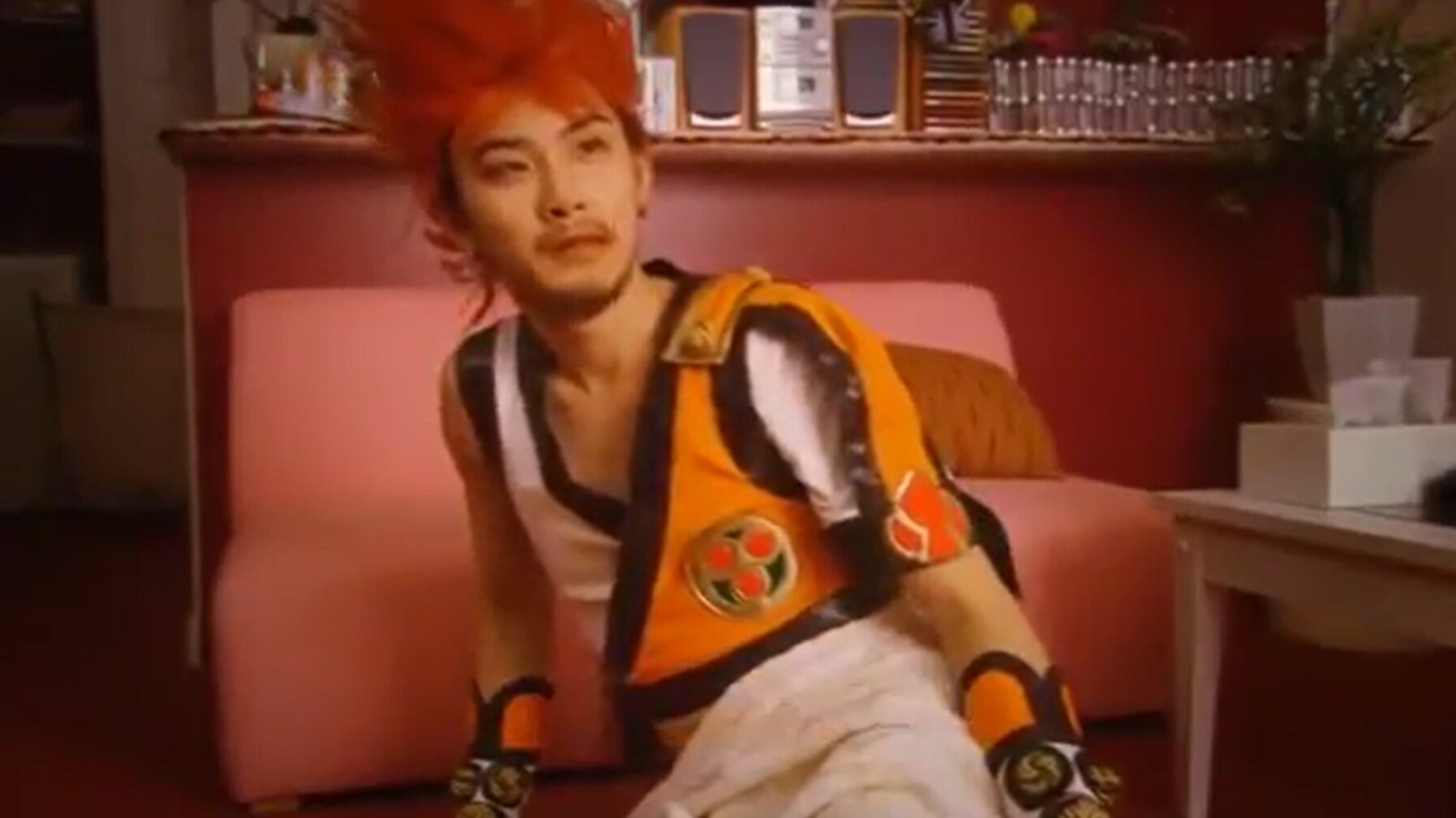FROM ICHI THE KILLER TO TOKYO ZOMBIE: THE STYLING OF MICHIKO KITAMURA

“Clothes have the power to change the whole world of movies and photography with just one outfit. That’s what makes me excited.”
The House of Himiko [2005]
Sukiyaki Western Django [2007]
The term “Japanese cinema” has been globally revered by expert cinephiles and casual movie-goers alike. The enthusiasm the brand “Japanese” carries all over the world is always something to remember. Japanese film directors are true references as well as the movies’ fashion icons that light the way for many generations to come.
Casshern [2004]
It’s precisely when these two industries collide that it creates space for other very talented individuals that may not get the exposure those other two categories usually get. This is what this article is all about. Once you are interested in why Tadanobu Asano is wearing a satin tracksuit or why the movie “Ichi the killer” is so trippy then you find yourselves in the “sub-universe” of Michiko Kitamura.
Tokyo Zombie [2005]
EARLY LIFE & WORK
Michiko Kitamura. Born in Ishikawa Prefecture in 1949.
Whether you are familiar with her work or not, she represents the flip side of the coin when it comes to design and creativity. As she quotes: ‘’ Most Japanese magazines look the same.’’ Therefore she always goes for different routes to get wherever she is heading. Unlike many other creatives, she found her calling in her late 20’s by accident. After a long year travelling through America, Michiko landed in Paris to stay there for a year pursuing sculpture while she was working as a consultant for Rei Kawakubo. During her trip back to Japan, Kitamura’s style caught the eye of a magazine editor who was impressed by her way of thinking and personality so he handed over a business card saying: “Styling would fit you. Once you get back to Tokyo go there. If you talk the way you are talking to me right now the job will be yours.”
That casual encounter was the first step into the industry. Back in Tokyo Kitamura started working as a stylist for commercials then transferred to other areas of pop culture like cinema, fashion during the mid-80s and theatre in a more mature stage of her career. Her debut was with “And Then” [1985] by Yoshimitsu Morita. A film that shows the pressure of getting married in Japanese society by narrating the story of a past love.
As we observe her work you can notice a strong will towards experimenting and observing, that puts her in a post-modernist category giving the feeling that some of her designs from twenty years ago are still relevant to this date. Since Kitamura started, her brand hasn’t ceased to stop growing and now she is considered a fashion authority who dresses celebrities, actors and models among others with the likes of Elle Japan, VOGUE or LOEWE to name a few.
MORE THAN CLOTHES: METHODOLOGY.
“...what does it mean to add a piece of clothing to something that is originally good to be naked in? I am pursuing that. Ultimately, I want to be close to being naked. To do that, the actor must be trained.”
With Kitamura’s strong personality and honesty, many have found it difficult working with her, especially film directors. Many have tried to submit her work for benefit of their own vision but eventually, end up gravitating towards Kitamura’s ideas. A good example is the movie "Dead Ends Run" [2003] aesthetically conceived by the designer while having a trip under opioids on her holiday trip around South America.
“...but I think that’s right. If you can’t respect the director, you can’t keep up. A director who falls in love is equal to the work and the way it is born. Even if you’re doing something you can’t usually do, if your work is amazing, you’ll be able to keep up. Human nature comes out in that way of life.”
Costume design like many other features in a movie is known to be really tough work. Mainly because one must have a pretty good understanding of the director’s personality, taste and view about the film in question. So for her to be able to accept a job like this, she always must feel certain creative freedom and connection to the scrip. The way she interconnects the fabric with emotions and the character that it’s been portrayed makes you look at her more as a scientist in the art of costume than just a stylist for films. Always having Rei Kawakubo and Martin Margiela as references makes her work subtle and conceptual to the point that the costume is a movie in itself where the clothes breathe life in a parallel universe by themselves. It opens up another conversation to discuss the work on the costumes.
“If I can’t respect even a designer, I can’t express using the clothes he makes. Depending on the times, it may be Rei Kawakubo or Martin Margiela. The way I make clothes is similar to Margiela’s way of thinking. But with Margiela’s appearance, it’s no longer new to break clothes on your own. Until he appeared, there was no such person, so I just made it myself”
Sukiyaki Western Django [2007]
Most of her career has been inside the film industry but her inspiration comes from nature, literature, Japanese culture and her interactions with people. Red, blue, white and black are the main tones she uses for her creations as she works with all variations of each of those colours, the possibilities from such a small palette are endless. Because of that, Kitamura has created a pretty recognizable style without repeating herself. Observation and science are the main ingredients of the creative process. Everything but clothes! In her interviews, she often admits “I don’t know about clothes”, “I’m not interested in styling” and it is precisely in that irony where her creativity arises. That’s another similarity with Kawakubo or Margiela. The total isolation from the regular life stimulus by searching for inspiration in completely different fields gives you the advantage of creating new connexions within your work. A habit that developed, allows you to build your creative language. A habit, she communicates efficiently.
Sukiyaki Western Django [2007]
“I learned from Goethe’s theory of colour, but the body reacts to the combination of colours. I’m talking about what makes the body happy with the colour scheme. Red is also the colour that fire imagines. Looking at hot drinks, the “HOT” mark is written in red. The “COLD” one is blue. It is the brain that judges the symbol of the thing. After that, the five senses react. People feel colour with their mind and body. All sports brands that make clothing for athletes around the world resemble this colour theory.”
Inspiration can come from many places for her. Using Japanese folk is one of those as it shows in the movie “Ichi the killer” [2001] probably her most iconic work to date, in which the tracksuit from Kakihara [Tadanobu Asano] is based in “Old Pine Tree and White Phoenix” [C. 1765-66] from the Japanese artist Ito Jakuchu or the costumes from the movie Sukiyaki
Western Django [2007], based on the works of the same artist. The second one made her even win Best technical Award.
“Japanese painting is a source of inspiration. In the past, I worked on a costume inspired by Ito Jakuchu’s “Old Matsu Hakuhozu” starring Tadanobu Asano. I made transparent lace clothes with the image of this picture and repeated the worm-coloured setup. Male insects and birds will look beautiful during the oestrous cycle, right? I wanted to express that with costumes.”
THE IRRELEVANCE OF GENDER IN FASHION
As a creative, she felt she was one of the few women that got to make a living inside of this industry something that only reaffirmed her values even more. Most of her work is based on the idea of breaking the binary grid of what we can consider masculine or feminine clothes. By blurring those lines, there is a blank space where colours, texture, forms and patterns co-exist in a way that reminds of John Galliano or Dries van Noten, designers that inspired her to push in that direction. She tells ‘’not to be aware of femininity’’ and what triggers her are people with a transcendental appeal by not being aware of the gender of their clothes have been designed for.
Many would describe Kitamura’s work as unconventional and found plenty of rejection from mainstream cinema and advertisement industry where fame and connections are a more valid form of currency instead of talent. With that type of pressure, Kitamura found her place among independent productions, niche film directors and other platforms experimental enough to let her ideas blossom.
“In class, I was always observing such people. I can only make costumes with that kind of experience. Myself, I’m looking at things in my way of life. ”
MOST KNOWN WORKS:
Ichi the killer [2001] by Takashi Miike
Based on the original manga of the same name. Tells the story of the bloody killer named Kakihara [Tadanobu Asano] committing crimes while his boss it’s been kidnapped by an unconventional hitman [Nao Omori].
Koi no Mon [2004] by Suzuki Matsuo
An extravagant and jobless artist that makes manga with stones encounters a girl with an apparently normal life. When they get to know each other she shows her true personality.
Imprint [2006] Takashi Miike
Imprint is the thirteenth episode of the series Masters of Horror. An American traveller visits a ghost island located in Japan searching for a girl he lost several years ago.
Sukiyaki Western Django [2007] Takashi Miike
An outsider helps a small village to prosper while they try to survive a war between gangs that control each half of the village.
“If you think it’s beautiful, keep watching. Because that is more important. If there were any lessons better than being fascinated by the beauty of the cherry blossoms, I could find value in the school. But I couldn’t. That’s how I learned to think for myself. It means watching something. There is a taste in seeing. So why do kids who don’t want to go to school try to go to school?”
Photo credit: Masashi Asada
Michiko Kitamura in her 70’s is still active releasing books of her work, as a stylist, being the face for fashion brands and working with international magazines.
About the author:
Spain based Gooseed is a designer, stylist and creative who often writes about graphic design, sci-fi and “behind the scenes” fashion related topics who also loves to document the creative process in a variety of artistic disciplines. You can find him at @cslocalsupportgroup.

























